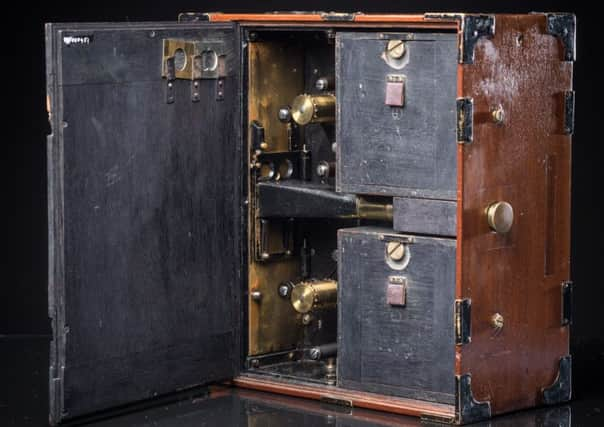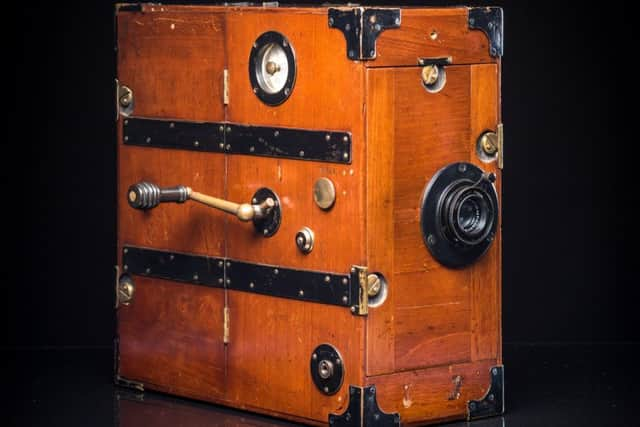Brighton's Object of the Month '“ a pioneering '˜special effect' cine-camera


April’s object is the ‘Special Effect’ cine-camera by Alfred Darling, c1899-1900.
This 35mm camera was designed and built by Brighton-based engineer Alfred Darling, to create special effects in early films.
Advertisement
Hide AdAdvertisement
Hide AdIt has two removable plates with apertures, which produce the effect of looking through a telescope, magnifying glass or binoculars.


In 1899, Brighton filmmaker George Albert Smith bought a similar camera from Darling and soon afterwards shot Grandma’s Reading Glass, which pioneered film editing techniques.
Moving between ‘objective’ and ‘subjective’ views, he created some of the earliest close-up shots in film history.
The cine-camera can be seen in Brighton Museum’s Experimental Motion film display until June 25.
Have you been to Brighton Museum recently? If so, what was your favourite exhibition? Let us know!